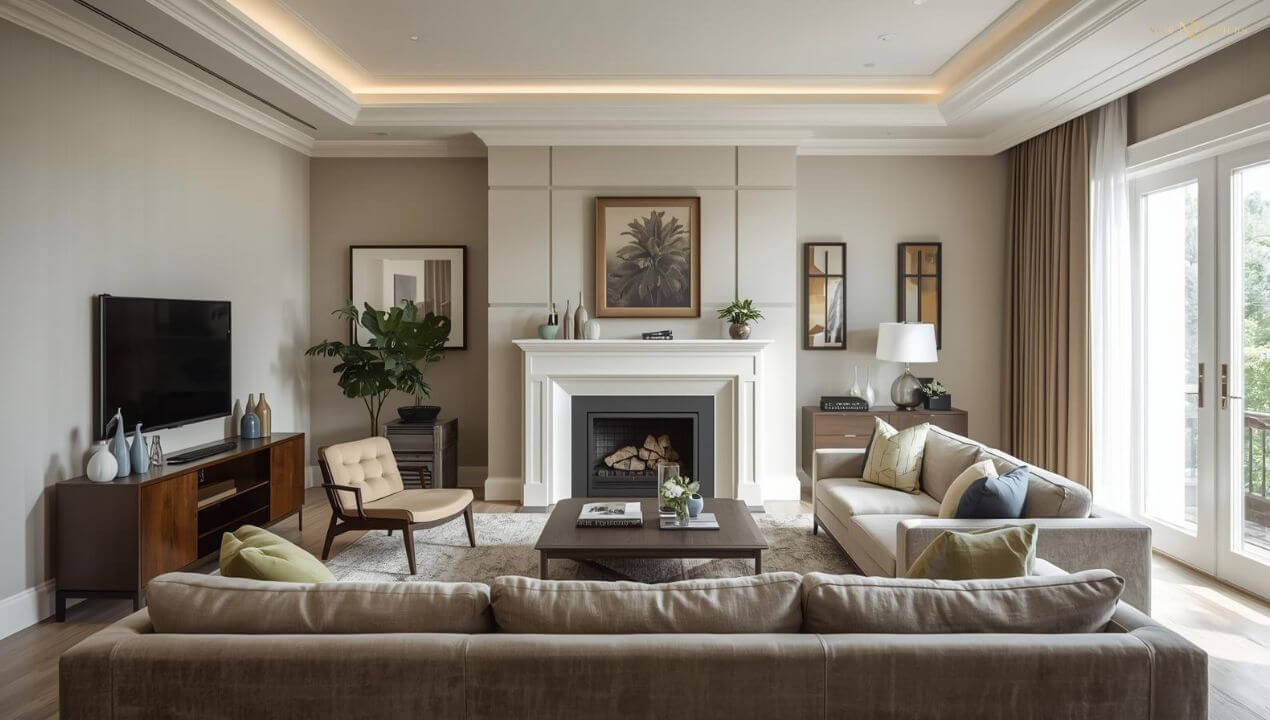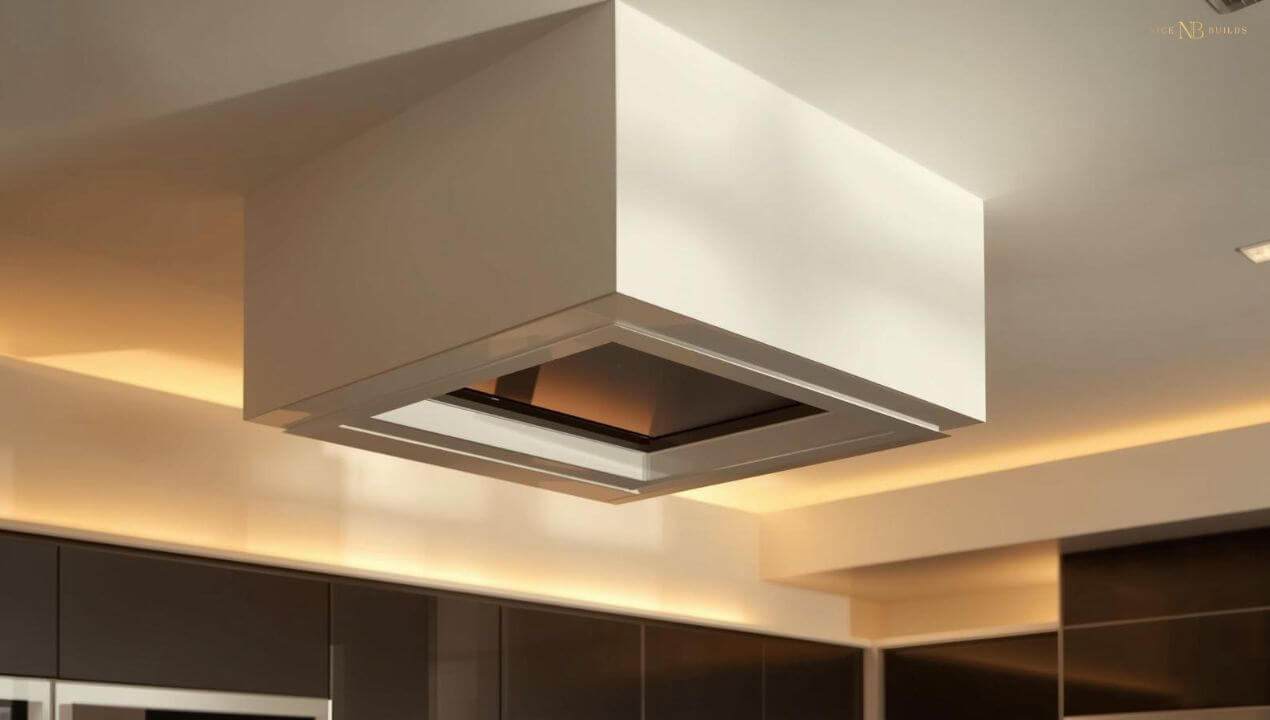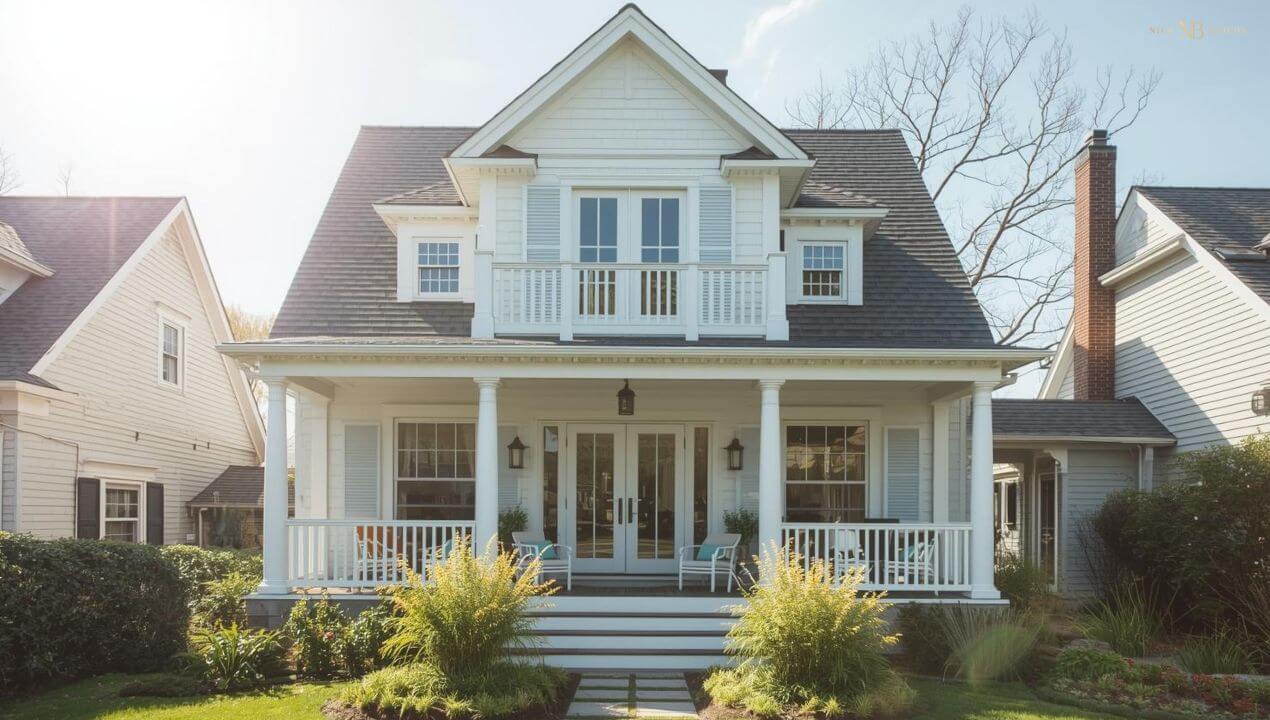Architectural jargon can be a fix, especially as a first-time homeowner. Among various details of homebuilding, a specific design option is minute yet essential, known as a bulkhead. While it may not sound like the most appealing addition to your home, Bulkheads can provide some interesting dimension and style.
Essentially, a bulkhead is an easily enclosed, framed box-like structure used to fill the space between cabinets and the ceiling. Beyond decorative appeal, bulkheads can be used to conceal plumbing, wires or air conditioning ducts that could otherwise make the home look messy. They can be used anywhere in the house, regardless of the ceiling height, above laundry or bathroom cabinets, over built-in wardrobes or storage cupboards and in the kitchen.
Bulkheads can be constructed from materials such as drywall (gypsum board), wood, or metal, and can be painted to complement the ceiling or room decor. This architectural feature serves both aesthetic and functional purposes.
Is this your first time buying a home? Check out our piece on the First Home Owner Grant QLD to learn more about the cash grant initiative!
What is a Kitchen Bulkhead?
Bulkheads in the kitchen are one of the most commonly integrated features. Kitchens have several unsightly elements, including lights, power circuits, wires for the microwave, fridge and other smart appliances. Without a bulkhead, all mechanical components are exposed or poorly concealed, which can detract from the kitchen’s appearance. Bulkheads not only contain noise but also define space, improve acoustics in the room, and add a touch of sophistication to your kitchen.
Another key role of a bulkhead is to divide the spaces within a room. In larger kitchen areas or open-concept layouts, a bulkhead can subtly divide vicinities, creating a sense of order and balance.

However minor, bulkhead installations over kitchen cabinets also reduce the need for cleaning in high places. There’s no shelf space above cabinets for dust to gather, which means less climbing and wiping. All such visual and functional aspects can help maintain a clean home and add dimension to rooms that would otherwise be unrefined and boring.
Soffits and Bulkheads: The Differences
While the two are often confused, soffits and bulkheads are distinct architectural features. A soffit is the underside of an architectural projection, especially an eave, but can be installed on any similar arches. Soffits are features utilised outside the home, while bulkheads are internal ceiling features. A bulkhead is a horizontal structure that extends from the ceiling, typically ending at the top of fixed cabinetry. Both serve to hide unappealing elements and propose a sense of character, but their placement and primary functions differ.
Soffits cover exposed beams, support eaves on a home and protect from pests and moisture to prevent decay or damage. On the other hand, bulkheads conceal ductwork, beams, and wires. Soffits are features utilised outside the home, while bulkheads are internal ceiling features.
Are Kitchen Bulkheads Out of Style?
Bulkheads have always been a popular design feature. Initially used as a functional addition to cover certain elements and make the home appear uncluttered. Over the years, they’ve also become a stylistic choice. Several homes even use bulkheads as their statement piece; regardless of the ceiling height, they create a striking focal point.
Trends toward open, airy interiors have discouraged overly boxed ceilings; however, well-designed bulkheads remain highly relevant. In large, elegant Hamptons-style homes, where character is key, bulkheads help dramatise the interiors. They are versatile features that you can customise to fit and suit any home style, from modern to minimalist or traditional and classic. If drafted thoughtfully, bulkheads help accentuate rather than restrict space.
Bulkhead Construction and Installation
Bulkhead construction and installation play a crucial role in the overall home-building process. While they may not provide structural support, they contribute to completing the aesthetic and functional aspects of a home. These details, however small they may seem, bring together aesthetics, utility and spatial definition to uplift the overall design and layout of the house.

Planning and Design
Every bulkhead placed has a specific purpose; while it is true that bulkheads also serve a decorative intent, they’re equally functional. Identifying such intentions and planning accordingly is vital. The space where the bulkhead is to be installed must be measured and lined as needed. If you wish to hide imperfections, surveys should be properly conducted to recognise obstructions. The designed bulkhead should meet the local codes and style specified, usually rectangular or L-shaped. Following the framework helps produce a successful design and a clean finish.
Material Selection
Use of appropriate materials certifies a quality bulkhead. Bulkheads are typically made from lightweight framing materials and finishing materials such as drywall or plasterboard. The framing generally uses standard measurements, treated pine studs for moisture-prone areas like bathrooms and basic framing timber for dry locations. The selection also depends on whether the bulkhead serves a functional or stylistic purpose.
Framing the Bulkhead
The framework is the skeleton of the bulkhead. It must be strong enough to support the drywall and other possible features. Once the layout lines are marked, the location where the bulkhead will be attached is covered with a ladder frame at specific sections of the ceiling. Once that’s done, ceiling joists and wall studs are attached using appropriate fasteners.
Installing Drywall
When the frame is built, it’s finally time to cover it with a finishing material. Drywall is a standard choice for interior design; it’s easy to install, paintable and affordable. For moisture-locked areas like bathrooms and laundry rooms, moisture-resistant drywalls help prevent decay and excess moisture. The drywall should be cut to fit the bulkhead. Once it’s screwed on, drywall tape is applied over the seams. To finish, laying two to three coats of joint compound and sanding between coats helps lock the work.
Finishing
To complete the look, finishing materials may be added for design and durability. Ensuring all corners are seamless before applying the primer and paint helps to achieve a smooth wall. Optionally, you can add crown moulding, LED lights and other decorative details according to the overall home design or personal preference.
Discover the cost of building your dream home in 2025!
Do Kitchen Bulkheads Provide Structural Support?
Bulkheads aren’t typically designed to add structural support to a kitchen; they’re non-structural components in construction. They do not bear any load of the home’s layout, but can stabilise the overall installation of cabinets and shelves. By connecting the tops of the kitchen cupboards securely to the lowered ceiling, bulkheads can prevent movement, sagging and shaking. Additionally, they can also provide support for pendant light fittings or other decorative elements, where ceiling mount options are limited.
Why Should You Have Bulkheads in Your Kitchen?

If you’re contemplating whether to add a bulkhead to your kitchen design or leave it out, there are several reasons why you should opt for the former. Whether you’re planning to renovate or rebuild, bulkheads are a uniquely dynamic addition if done right. Installing a bulkhead in your kitchen not only enhances the space’s aesthetic appeal but also presents several practical advantages.
Conceal Unsightly Elements
There should be several unappealing items around your home that perform their maximum duties, but look absolutely hideous lying around. Why else would your houses look so different from the advertised display homes?
Bulkheads are commonly used to conceal power ducts, electrical wires, plumbing materials or structural elements that run through your ceiling. While rerouting such services could be an option, it isn’t always cost-effective or feasible and concealing them without bulkheads leaves little to no possibilities. Bulkheads give a sterile, more polished look to your room while providing functional benefits. They don’t simply hide but also safeguard important components that help you run your services.
Harmony Between Cabinets and the Ceiling
Seamlessness is another important feature of bulkheads. Often, kitchens with high cabinets tend to look awkward and imbalanced; bulkheads can help fill the gap between your wall cabinets and the ceiling, giving a built-in and uniform look. Bulkheads also prevent dust buildup on top of cabinets, and with the space enclosed, the need for regular cleaning is eliminated.
Improved Accoustics
If you have a particularly empty kitchen, or one filled with reflective surfaces such as stone tops, tiled floors or glass, sound can travel to create an echo and noise buildup. Bulkheads help improve the acoustics of your room by absorbing and controlling such sounds. The change in ceiling depth disrupts and scatters sound waves instead of allowing them to bounce freely between flat surfaces. Noises caused by clanging pots, vents and conversations can be contained with a bulkhead over the kitchen or island, which defines the zones in style.
Read: Best Suburbs to live in Brisbane.
Enhance Aesthetics
Bulkheads, apart from functional purposes, can also be designed to add architectural interest. If you prefer a modern look, adding cove or hanging lights is advised. The bulkheads can be painted and textured according to personal preference to match or contrast your kitchen cabinetry. If you enjoy a traditional touch, install mouldings and trims for a homey feel.
Defining Spaces
In modern open-concept homes, where the kitchen and dining or the living area is mostly seamless or combined, bulkheads can help visually separate spaces without using walls. This is especially helpful when paired with complementary decoration, varied ceiling measurements, lights and appliances. The distinct shape and form of bulkheads create a focal point that draws the eye upward, topped with similar features, adding visual interest to your ceiling.
What to Consider When Installing a Bulkhead in Your Home?
When planning to incorporate a Bulkhead in your home, in the kitchen, hallway, living room or basement, several factors should be considered. Bulkheads can be wide and prominent, narrow and subtle, extremely purposeful or purely decorative. Whether you’re aiming for a sleek, modern look or trying to hide unsightly elements, understanding your goals and limits is essential.
Purpose: Before anything else, determine the function of your bulkhead. What is the purpose? This will guide your decisions throughout the process; your reasons for installing will influence the bulkhead design, size and materials. Functional bulkheads often require more planning and space to accommodate additions, while decorative ones are less time-consuming and flexible in design.
Size: The size of a bulkhead should be proportionate to that of the room. If the bulkhead is too prominent, it can overwhelm the space and draw attention for the wrong reasons. If it’s too small, it may fail to conceal the necessary items or look out of place. Using the room’s height and overall layout as a guide can help build integrated bulkheads.
Shape: Bulkheads are primarily box-shaped extensions on the ceilings, but there’s always room for creativity. You can experiment with dimensions and shapes to suit specific architectural aspirations. If you’re into visual effects, layers and stepped bulkheads are a great addition. Designing your home isn’t an afterthought; intentions should be palpable.
Material: Another crucial step is to choose the right material; opt for materials that match both the style and intended use of your home. Drywall is the most common choice; it’s easy to paint and ideal for concealing miscellaneous utilities. Wood adds warmth and character to your home; it’s great for building cosy and family spaces. If you prefer modern or industrial interiors, metal finishes are definitely the vibe.
Electricals and Lighting: If you wish to incorporate lighting, speakers or other electrical elements into the bulkhead, it’s essential to plan in advance. Lighting options like recessed downlights or LED strips can create an inviting ambience and highlight the bulkhead design. Including access panels is vital when enclosing electrical or plumbing systems to allow easy maintenance and future repairs.
DIY vs Professional Installation: Your skill level and the complexity of the project can help determine whether you should opt for a DIY or a professional installation. If you have experience with framing, drywalling, and fixtures, and the work is primarily for decorative purposes, a DIY is feasible. However, for a complex project that involves rerouting AC ducts, electrical wires and plumbing pipes, it is highly advisable to hire a professional.

Installing Bulkheads with Nice Builds
There are several reasons why you should consider adding bulkheads to your modern kitchen. Whether to add visual interest or enhance aesthetics, Nice Builds can help design custom bulkheads and ensure they’re not just functional but also seamlessly integrated into the overall layout of your space.
Every one of our builds is precisely measured, framed and finished to perfection. We assess your space and work to meet your needs, whether it is to hide ducts, unify the ceiling line with the cabinetry or create a stunning lighting feature. Our expert team can create designs that fit both your vision and floor plan.
Although kitchens are the most common spaces for bulkheads, we can do installations in bathrooms, hallways, laundry and other cabinetry zones. From planning and approvals to framing and finishing, Nice Builds handles the entire process with minimal disruption.
Get in touch with your trusted homebuilder to discover how we create complete and refined spaces with professionally designed and customisable bulkheads that blend function with finesse.
FAQs
What are the Pros and Cons of Bulkheads?
Bulkheads can give spaces an integrated, subtly divided and more polished look. They work to conceal unsightly elements and help with energy efficiency, low energy consumption and fair utility. At the same time, they also take up space and can feel oppressive, especially in smaller rooms. If not designed properly, bulkheads can look unappealing and heavy.
Are there Building Codes for Bulkheads?
While there is no word-for-word specification, the National Construction Code (NCC) specifies minimum requirements for Australian homes to ensure safety, health and sustainability. They have standards on ceiling heights and instruct the use of fire-resistant materials, design and installation guidelines for elements like bulkheads.
What is the Life Span of a Bulkhead?
Regular maintenance is essential to ensure bulkheads run through their maximum capacity. The materials used and environmental conditions directly affect the lifespan. Typical drywalls can sustain up to 30 years, and vinyls can last another 50 or more. If built strong and left undisturbed, an interior bulkhead has boundless potential.
Do Bulkheads affect Home Value?
However minor, bulkheads certainly affect property value. Well-designed and integrated bulkheads enhance the aesthetic appeal of the home, help conceal unsightly devices and promote functionality. There’s no direct impact, but bulkheads do affect the buyer perception.






